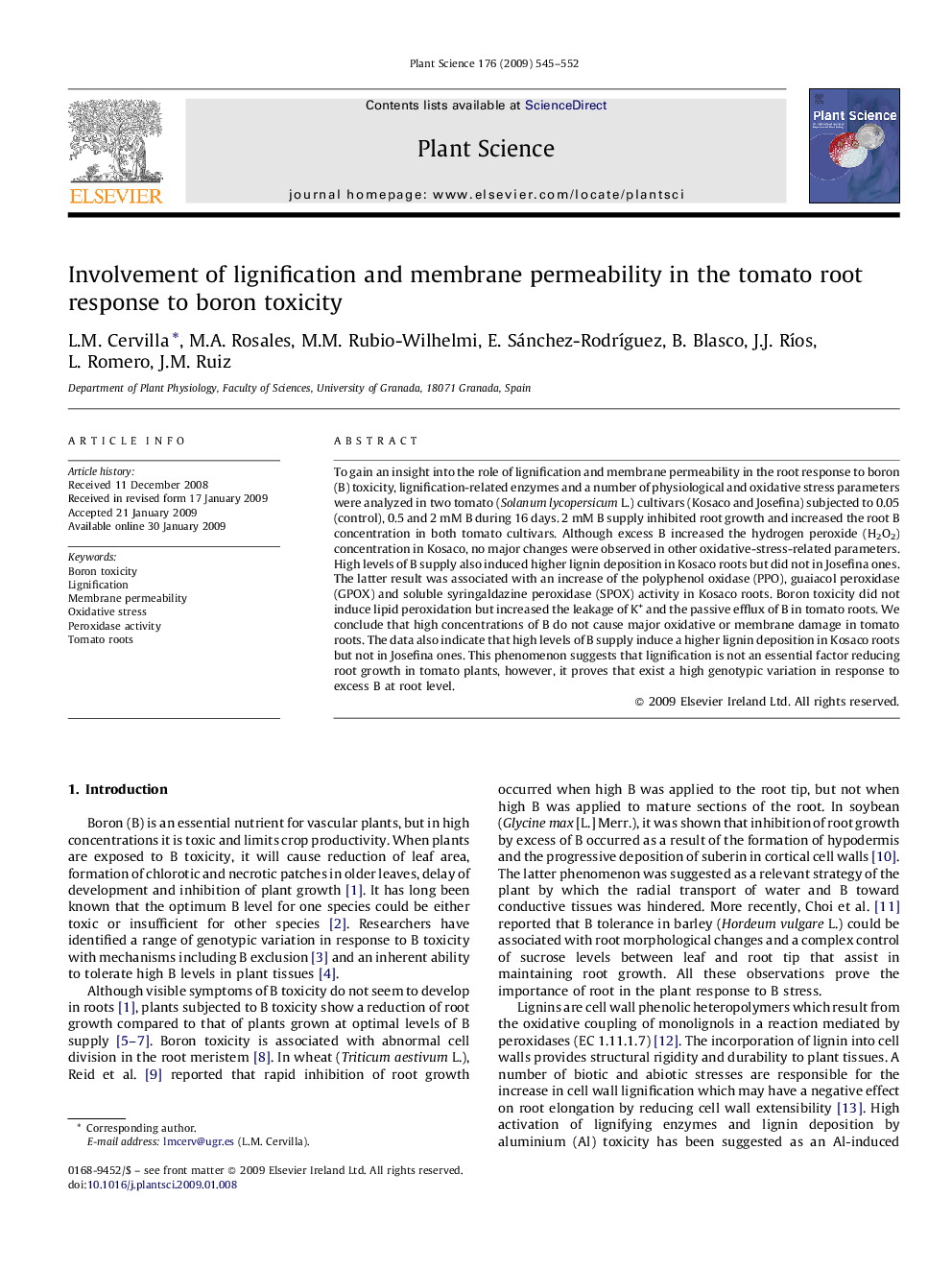| Article ID | Journal | Published Year | Pages | File Type |
|---|---|---|---|---|
| 2018243 | Plant Science | 2009 | 8 Pages |
To gain an insight into the role of lignification and membrane permeability in the root response to boron (B) toxicity, lignification-related enzymes and a number of physiological and oxidative stress parameters were analyzed in two tomato (Solanum lycopersicum L.) cultivars (Kosaco and Josefina) subjected to 0.05 (control), 0.5 and 2 mM B during 16 days. 2 mM B supply inhibited root growth and increased the root B concentration in both tomato cultivars. Although excess B increased the hydrogen peroxide (H2O2) concentration in Kosaco, no major changes were observed in other oxidative-stress-related parameters. High levels of B supply also induced higher lignin deposition in Kosaco roots but did not in Josefina ones. The latter result was associated with an increase of the polyphenol oxidase (PPO), guaiacol peroxidase (GPOX) and soluble syringaldazine peroxidase (SPOX) activity in Kosaco roots. Boron toxicity did not induce lipid peroxidation but increased the leakage of K+ and the passive efflux of B in tomato roots. We conclude that high concentrations of B do not cause major oxidative or membrane damage in tomato roots. The data also indicate that high levels of B supply induce a higher lignin deposition in Kosaco roots but not in Josefina ones. This phenomenon suggests that lignification is not an essential factor reducing root growth in tomato plants, however, it proves that exist a high genotypic variation in response to excess B at root level.
